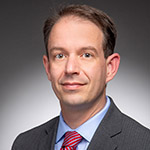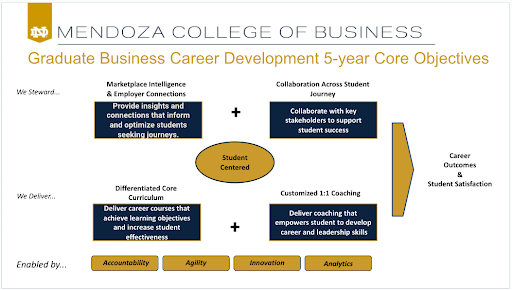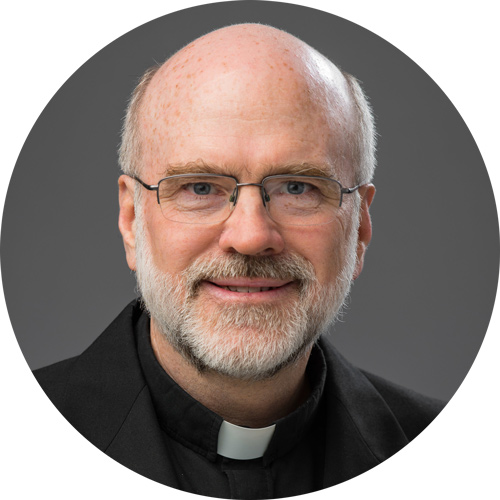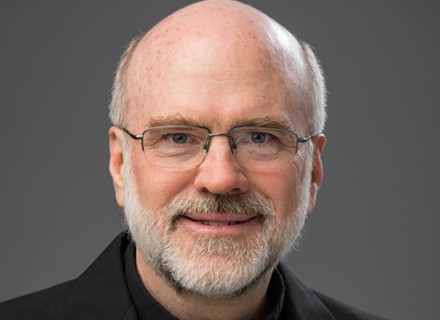Thank you to those who attended the inaugural University Chair Public Lecture Series on Tuesday featuring Mike Crant, the Notre Dame Professor of Management & Organization and the newest University Endowed chair at Mendoza. The event had a terrific turnout; it was great to see so many of you.
Mike delivered an enlightening — and entertaining — retrospective of his personal and professional life, presenting personal milestones as well as his research accomplishments including his seminal work in the area of the proactive personality, which has been cited more than 23,000 times. This makes Mike one of the best-cited scholars in the College as well as at the University. In addition, during his 33-year tenure at Notre Dame, Mike has taught over 6,800 students and 139 sections.
I also thank M&O Department Chair Ann Tenbrunsel, who helped introduce Mike. Ann recalled, “Those of you who have been in administrative roles — and especially those of you who have been department chairs — know what it means to have a few givers in your department. Since I have been chair for two-and-a-half years, Mike has never turned down an assignment. That includes some pretty onerous ones. Yet every time, he doesn't just do it, he doesn't just show up. His committee reports, his review of his colleagues' research, teaching and service, and I know this talk today, are always reflective of a tremendous amount of preparation and effort.”
Tom Bateman, the Bank of America Eminent Scholar of Commerce Emeritus from the University of Virginia and who supervised Mike’s dissertation, was also on hand to recall Mike’s early career as a research assistant at the University of North Carolina. Tom performed an impromptu and long-overdue hooding ceremony, which he neglected to do as Mike’s dissertation chair (and Mike has never let Tom forget it).

Mike’s talk also was a fun walk down memory lane for the College, including clips shared from this 1991 video about the College called, “Making a Difference.” There are many familiar (and younger!) faces in there!
All in all, it was a special occasion as Mike’s story illustrated the importance of research to his individual career and the College as a whole. Our research presents our distinctive lens on the world as a Catholic university. As a community, we all help to build our research reputation and share in its impact.
As I’ve presented previously, “Notre Dame 2033: A Strategic Framework” states as its top priority, “Notre Dame must be the leading global Catholic research university, on par with but distinct from the world’s best private universities.” Likewise at Mendoza, our top strategic priority is to elevate the quality and quantity of impactful research with relevance to business and society. A major part of that is to elevate our research culture, which is one of the main responsibilities of Senior Associate Dean Ken Kelley. Under Ken’s leadership, we are working on elevating our research culture on many levels.
Let me mention eight ways in particular where we are working to elevate our research culture:
1. Expanding the number of tenure-track faculty, research faculty, post-docs and visiting scholars, especially once we have more space when the new building, the North Addition, is completed.
2. Starting our first-ever doctoral programs in Analytics and Management.
3. Launching the new Undergraduate Research Scholars Program led by Hal White, starting in fall 2024.
4. Building our research infrastructure including the data scientist team.
5. Constructing a new Behavioral Lab in a new physical space in our basement in the calendar year 2024.
6. Supporting research labs around coherent research agendas, such as, for example:
- The Human-Centered Analytics Lab co-directed by Ahmed Abbasi and Ken Kelley.
- The Gaming Analytics and Business Research Lab directed by Nick Berente.
- The new Humanitarian Operations Management Lab directed by Alfonso Pedraza-Martinez.
7. Starting a sabbatical policy under which tenured faculty members will take a year-long research leave without teaching obligations, with an expected launch in the academic year 2024-2025 (and which I’ll share more about in the spring semester).
8. And finally, organizing more research conferences and seminars. Among the new research seminars, a key initiative is to provide more opportunities to gather as a College to hear about the research from our colleagues, including faculty from across Mendoza, our staff and our students.
The University Chair Public Lecture Series is part of this last effort to gather as a College across departments, with faculty, staff and students to recognize, celebrate and elevate the great research taking place at Mendoza. We will hold the second lecture during the spring semester. I hope to see you there.
My thanks again to all who made Tuesday’s event possible – Mike Crant and his family, Ann Tenbrunsel, Tom Bateman, Reilly Fangman, Carol Elliott, Dana Pierce and Chad DeWeese.
In Notre Dame,
Martijn








